- Home
- John Norman
Explorers of Gor coc-13
Explorers of Gor coc-13 Read online
Explorers of Gor
( Chronicles of Counter-Earth - 13 )
John Norman
All the glorious panorama of Earth's planetary twin, barbaric Gor, is present in John Norman's latest novel.
When the shield ring of the much feared Kurii falls into the possession of a mysterious black explorer, it becomes vital to the Priest-Kings that Tarl Cabot himself regain that ancient product of an alien science. His quest brings him to the unmapped interior of the great equatorial rain-forests and into new dangers without parallel.
Here are jungle kingdoms and tropical trade cities, fierce beasts and fiercer men. And at the heart of this full-bodied Gorean novel is a lost city - and a linkage of the loveliest enemy agents ever lured from the cities of far-off Terra.
EXPLORERS OF GOR
(Volume thirteen in the Chronicles of Counter-Earth)
by John Norman
1. I Talk With Samos
She was quite beautiful.
She knelt near the small, low table, behind which, cross-legged, in the hall of Samos, I sat. At this table, too, cross-legged, sat Samos. He faced me. It was early evening in Port Kar, and I had supped with Samos, first captain in the council of captains, that congress of captains sovereign in Port Kar. The hall was lit with burning torches. It contained the great map mosaic.
We had been served our supper by the collared slave, who knelt near us.
I glanced at her. She wore a one-piece tunic of rep-cloth, cut high at the thighs, to better reveal them, her steel collar, which was a lock collar, and her brand. The brand was the common Kajira mark of Gor, the first letter, about an inch and a half in height and a half inch in width, in cursive script, of the expression ‘Kajira’, which is the most common expression in Gorean for a female slave. It is a simple mark, and rather floral, a staff, with two, upturned, frondlike curls, joined where they touch, the staff on its right. It bears a distant resemblance to the printed letter ‘K’ in several of the Western alphabets of Earth, and I suspect, in spite of several differences, it may owe its origin to that letter. The Gorean alphabet has twenty-eight characters, all of which, I suspect, owe their origin to one or another of the alphabets of Earth. Several show a clear-cut resemblance to Greek letters, for example. ‘Sidge’, on the other hand, could be cuneiform, and ‘Tun’ and ‘Val’ are probably calligraphically drifted from demotic. At least six letters suggest influence by the classical Roman alphabet, and seven do, if we count ‘Kef’, the first letter in ‘Kajira’. ‘Shu’ is represented by a sign which seems clearly oriental in origin and ‘Homan’, I speculate, may derive from Cretan. Many Gorean letters have a variety of pronunciations, depending on their linguistic context. Certain scribes have recommended adding to the Gorean alphabet new letters, to independently represent some of these sounds which, now, require alternative pronunciations, context-dependent, of given letters. Their recommendations, it seems, are unlikely to be incorporated into formal Gorean.
In matters such as those of the alphabet conservatism seems unshakable. For example, there is not likely to be additions or deletions to the alphabets of Earth, regardless of the rationality of such an alteration in given cases. An example of the conservatism in such matters is that Goreans, and, indeed, many of those of the Earth, are taught their alphabets in an order which bears no rational relation whatsoever to the occurrence pattern of the letters. That children should be taught the alphabet in an order which reflects the frequency of the occurrence of the letters in the language, and thus would expedite their learning, appears to be too radical and offensive an idea to become acceptable. Consider, too, for example, the opposition to an arithmetically convenient system of measurement in certain quarters on Earth, apparently because of the unwillingness to surrender the techniques of tradition, so painfully acquired so long ago.
“Do Masters desire aught else of Linda?” asked the girl.
“No,” said Samos.
She put her small hand on the table, as though to reach to him, to beg his touch.
“No,” said Samos.
She withdrew, head down. She picked up the small tray from the stand near the table. On it was the small vessel containing a thick, sweet liqueur from distant Turia, the Ar of the south, and the two tiny glasses from which we had sipped it. On the tray, too, was the metal vessel which had contained the black wine, steaming and bitter, from far Thentis, famed for its tarn flocks, the small yellow-enameled cups from which we had drunk the black wine, its spoons and sugars, a tiny bowl of mint sticks, and the softened, dampened cloths on which we had wiped our fingers.
I had eaten well.
She stood. up. She held the tray. The gleaming collar, snug and locked, was very beautiful on her throat.
I remembered her from several months ago when I had first seen her, when she had had about her throat only a simple collar of iron, curved about her throat by the blows of a metal worker’s hammer.
She looked at Samos, her lip trembled.
She had been the girl who had brought to the house of Samos the message of the scytale. The scytale had been a marked hair ribbon. Wrapped about the shaft of a spear, thus aligning the marks, the message had appeared. It had been to me, from Zarendargar, or Half-Ear, a war general of the Kurii, inviting me to meet him at the “world’s end.” My speculation that this referred to the pole of the Gorean northern hemisphere had proved correct. I had met Half-Ear there, in a vast northern complex, an enormous supply depot intended to arm and fuel, and otherwise logistically support, the projected invasion of Gor, the Counter-Earth. I think it likely that Half-Ear perished in the destruction of the complex. The body, however, was never recovered.
The girl who had served us this night, slender and blond, blue-eyed, of Earth origin, had delivered to us the scytale. She had not, originally, even understood it to contain a message.
How different she seemed now from what she had then been. She had been brought to the house of Samos still in the inexplicable and barbarous garments of Earth, in particular, in the imitation-boy costume, the denim trousers and flannel shirt of the contemporary Earth girl, pathologically conditioned, for economic and historical reasons, to deny and subvert the richness of her unique sexuality. Culture decides what is truth, but truth, unfortunately for culture, is unaware of this. Cultures, mad and blind, can die upon the rocks of truth. Why can truth not be the foundation of culture, rather than its nemesis? Can one not build upon the stone cliffs of reality rather than dash one’s head against them? But how few human beings can think, how few dare to inquire, how few can honestly question. How can one know the answer to a question which one fears to ask?
Samos, of course, immediately recognized the ribbon as a scytale. As for the girl, he had promptly, to her horror, had her clothing removed and had had her put in a brief rep-cloth slave tunic and a rude neck-ring of curved iron, that she would not escape and, anywhere, could be recognized as a slave. Shortly thereafter I had been invited to his house and had received the message. I had also questioned the girl, who had, at that time, spoken only English. I recalled how arrogant and peremptory she had been, until she had learned that she was no longer among men such as those of Earth. Samos had had her taken below and branded, and used for the sport of the guards, and then penned. I had thought that he would have sold her, but he had not. She had been kept in his own house, and taught the meaning of her collar, fully.
I saw the brand on her thigh. Although the brand was the first letter, in cursive Gorean script, of the most common Gorean expression for a slave girl, ‘Kajira’, its symbolism, I think, is much richer than this. For example, in the slave brand, the ‘Kef’, though clearly a Kef and in cursive script, is more floral, in the extended, upturned, frondlike curls, than would be the
common cursive Kef. This tends to make the mark very feminine. It is at this point that the symbolism of the brand becomes more clear. The two frondlike curls indicate femininity and beauty; the staff, in its uncompromising severity, indicates that the femininity is subject to discipline; the upturned curves on the frondlike curls indicate total openness and vulnerability. It is a very simple, lovely brand, simple, as befits a slave, lovely, as befits a woman.
Incidentally, there are many brands on Gor. Two that almost never occur on Gor, by the way, are those of the moons and collar, and of the chain and claw. The first of these commonly occurs in certain of the Gorean enclaves on Earth, which serve as headquarters for agents of Priest-Kings; the second tends to occur in the lairs of Kurii agents on Earth; the first brand consists of a locked collar and, ascending diagonally above it, extending to the right, three quarter moons; this brand indicates the girl is subject to Gorean discipline; the chain-and-claw brand signifies, of course, slavery and subjection within the compass of the Kur yoke. It is apparently difficult to recruit Goreans for service on Earth, either for Priest-Kings or Kurii. Accordingly, usually native Earthlings are used. Glandularly sufficient men, strong, lustful, and vital, without their slave girls, would find Earth a very dismal place, a miserable and unhappy sexual desert. Strong men simply need women. This will never be understood by weak men. A strong man needs a woman at his feet, who is truly his. Anything else is less than his fulfillment. When a man has once eaten of the meat of gods he will never again chew on the straw of fools.
“You may withdraw,” said Samos to the girl.
“Master,” she begged him, tears in her eyes. “Please, Master.”
A few months ago she had not been able to speak Gorean. She now spoke the language subtly and fluently. Girls learn swiftly to speak the language of their masters.
Samos looked up at her. She stood there, lovely, holding the tray before her, on which reposed the vessels, the tiny cups and glasses, the bowls, the spoons, the soft, dampened cloths on which we had wiped our hands. She had served well, beautifully, effacing herself, as a serving slave.
“Master,” she whispered.
“Return the things to the kitchen,” he said. I saw, from her eyes, that she was more than a serving slave. It is interesting, the power that a man may hold over a woman.
“Yes, Master,” she said. When she had knelt facing Samos, she had knelt in the position of the pleasure slave. When she had knelt facing me, she had knelt in the position of the serving slave. Samos, it was said, was the first to have brought her to slave orgasm. It had happened six days after she had first been brought to his house. It is said that a woman who has experienced slave orgasm can never thereafter be anything but a man’s slave. She then knows what men can do to her, and what she herself is, a woman. Never thereafter can she be anything else.
“Linda begs Master’s touch,” she said. The name ‘Linda’ had been her original Earth name. Samos had, after it had been removed from her, in her reduction to slavery, put it on her again, but this time as a slave name, by his will. Sometimes a girl is given her own name as a slave name; sometimes she is given another name; it depends on the master’s will. She spoke freely before me of her need for his touch. She was no longer an inhibited, negatively conditioned Earth girl. She was now open and honest, and beautifully clean, in her slavery, in her confession of her female truths.
Seeing the eyes of Samos on her she quickly went to the door, to leave, but, at the door, unable to help herself, she turned about. There were tears in her eyes.
“After you have returned the things to the kitchen—” said Samos.
“Yes, Master,” she said softly, excitedly. The small, yellow-enameled cups moved slightly on the tray. She trembled. The torchlight glinted from her collar.
“Go to your kennel,” said Samos, “and ask to be locked within.”
“Yes, Master,” she said, putting her head down. I thought she shook with a sob.
“I hear from the chain master,” said Samos, “that you have learned the tile dance creditably.”
The tiny cups and glasses shook on the tray. “I am pleased,” she said, “if Krobus should think so.”
The tile dance is commonly performed on red tiles, usually beneath the slave ring of the master’s couch. The girl performs the dance on her back; her stomach and sides. Usually her neck is chained to the slave ring. The dance signifies the. restlessness, the misery, of a love-starved slave girl. It is a premise of the dance that the girl moves and twists, and squirms, in her need, as if she is completely alone, as if her need is known only to herself; then, supposedly, the master surprises her, and she attempts to suppress the helplessness and torment of her needs; then, failing this, surrendering her pride in its final shred, she writhes openly, piteously, before him, begging him to deign to touch her. Needless to say, the entire dance is observed by the master, and this, in fact, of course, is known to both the dancer and her audience, the master. The tile dance, for simple psychological and behavioral reasons, having to do with the submission context and the motions of the body, can piteously arouse even a captured, cold free woman; in the case of a slave, of course, it can make her scream and sob with need.
“I hear that you have worked hard to perfect the tile dance,” said Samos.
“I am only a poor slave,” she said.
“The last five times you have performed this dance,” said Samos, “Krobus tells me that he could not restrain himself from raping you.”
She put down her head. “Yes, Master,” she said, smiling. “After you have been locked in your kennel,” said Samos, “ask for a vessel of warm water, oils and a cloth, and perfume. Bathe and perfume yourself. I may summon you later to my chamber.”
“Yes, Master,” she said, delightedly. “Yes, Master!”
“Slave!” he said.
“Yes, Master,” she said, turning quickly.
“I am less easy to please than Krobus,” he said. “Yes, Master,” she said, and then turned and fled, swiftly, from the room.
“She is a pretty thing,” I said.
Samos ran his tongue over his lips. “Yes,” he said.
“I think you like her,” I said.
“Nonsense,” he said. “She is only a slave.”
“Perhaps Samos has found a love slave,” I said.
“An Earth girl?” laughed Samos.
“Perhaps,” I said.
“Preposterous,” said Samos. “She is only a slave, only a thing to serve, and to beat and abuse, if it should please me.”
“But is not any slave,” I asked, “even a love slave?”
“That is true,” said Samos, smiling. Gorean men are not easy with their slaves, even those for whom they care deeply.
“I think Samos, first slaver of Port Kar, first captain of the council of captains, has grown fond of a blond Earth girl.”
Samos looked at me, angrily. Then he shrugged. “She is the first girl I have felt in this fashion toward,” he said. “It is interesting. It is a strange feeling.”
“I note that you did not sell her,” I said.
“Perhaps I shall,” he said.
“I see,” I said.
“The first time, even, that I took her in my arms,” said Samos, “she was in some way piteously helpless, different even from the others.”
“Is not any slave piteously helpless in the arms of her master?” I asked.
“Yes,” said Samos. “But she seemed somehow different, incredibly so, vulnerably so.”
“Perhaps she knew herself, in your touch, as her love master,” I said.
“She felt good in my hands,” he said.
“Be strong, Samos,” I smiled.
“I shall,” he said.
I did not doubt his word. Samos was one of the hardest of Gorean men. The blond Earth girl had found a strong, uncompromising master.
“But let us not speak of slaves,” I said, “girls who serve for our diversion or recreation, but of serious matters, of the concern
s of men.”
“Agreed,” said he.
There was a time for slaves, and a time for matters of importance.
“Yet there is little to report,” said he, “in the affairs of worlds.”
“The Kurii are quiet,” I said.
“Yes,” said he.
“Beware of a silent enemy,” I smiled.
“Of course,” said Samos.
“It is unusual that you should invite me to your house,” I said, “to inform me that you have nothing to report.”
“Do you think you are the only one upon Gor who labors occasionally in the cause of Priest-Kings?” asked Samos.
“I suppose not,” I said. “Why?” I asked. I did not understand the question.
“How little we know of our world,” sighed Samos.
“I do not understand,” I said.
“Tell me what you know of the Cartius,” he said.
“It is an important subequatorial waterway,” I said. “It flows west by northwest, entering the rain forests and emptying into Lake Ushindi, which lake is drained by the Kamba and the Nyoka rivers. The Kamba flows directly into Thassa. The Nyoka flows into Schendi harbor, which is the harbor of the port of Schendi, and moves thence to Thassa.” Schendi was an equatorial free port, well known on Gor. It is also the home port of the League of Black Slavers.
“It was, at one time, conjectured,” said Samos, “that the Cartius proper was a tributary of the Vosk.”
“I had been taught that,” I said.
“We now know that the Thassa Cartius and the subequatorial Cartius are not the same river.”
“It had been thought, and shown on many maps,” I said, “that the subequatorial Cartius not only flowed into Lake Ushindi, but emerged northward, traversing the sloping western flatlands to join the Vosk at Turmus.” Turmus was the last major river port on the Vosk before the almost impassable marshes of the delta.
“Calculations performed by the black geographer, Ramani, of the island of Anango, suggested that given the elevations involved the two rivers could not be the same. His pupil, Shaba, was the first civilized man to circumnavigate Lake Ushindi. He discovered that the Cartius, as was known, enters Lake Ushindi, but that only two rivers flow out of Ushindi, the Kamba and Nyoka. The actual source of the tributary to the Vosk, now called the Thassa Cartius, as you know, was found five years later by the. explorer, Ramus of Tabor, who, with a small expedition, over a period of nine months, fought and bartered his way through the river tribes, beyond the six cataracts, to the Ven highlands. The Thassa Cartius, with its own tributaries, drains the highlands and the descending plains.”

 Avengers of Gor
Avengers of Gor Kajira of Gor coc-19
Kajira of Gor coc-19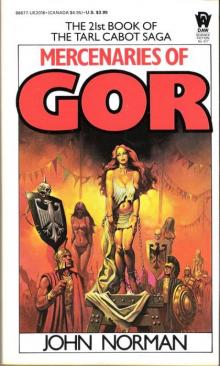 Mercenaries of Gor coc-21
Mercenaries of Gor coc-21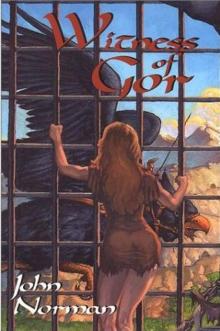 Witness of Gor coc-26
Witness of Gor coc-26 Witness of Gor
Witness of Gor Beasts of Gor coc-12
Beasts of Gor coc-12 Rebels of Gor
Rebels of Gor Mariners of Gor cog[oc-30
Mariners of Gor cog[oc-30 The King th-3
The King th-3 Captive of Gor coc-7
Captive of Gor coc-7 The Captain th-2
The Captain th-2 Vagabonds of Gor coc-24
Vagabonds of Gor coc-24 Explorers of Gor
Explorers of Gor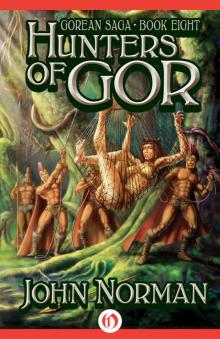 Hunters of Gor
Hunters of Gor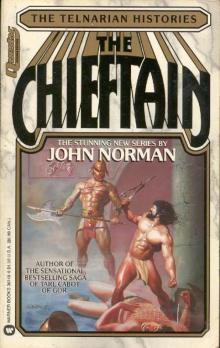 The Chieftan th-1
The Chieftan th-1 Outlaw of Gor
Outlaw of Gor Priest-Kings of Gor coc-3
Priest-Kings of Gor coc-3 Norman Invasions
Norman Invasions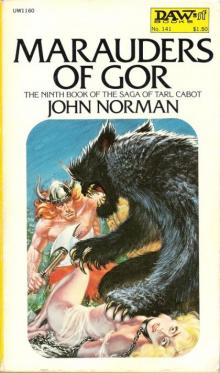 Marauders of Gor coc-9
Marauders of Gor coc-9 Kur of Gor coc-28
Kur of Gor coc-28 Time Slave
Time Slave The Chieftain
The Chieftain Kur of Gor
Kur of Gor Rogue of Gor
Rogue of Gor The Totems of Abydos
The Totems of Abydos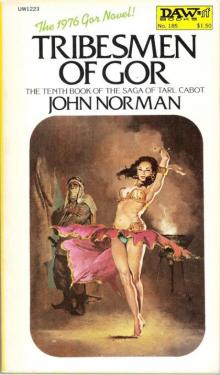 Tribesmen of Gor coc-10
Tribesmen of Gor coc-10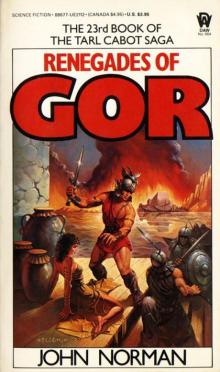 Renegades of Gor coc-23
Renegades of Gor coc-23 The King
The King Tarnsman of Gor
Tarnsman of Gor The Usurper
The Usurper Captive of Gor
Captive of Gor Conspirators of Gor
Conspirators of Gor Smugglers of Gor
Smugglers of Gor Savages of Gor
Savages of Gor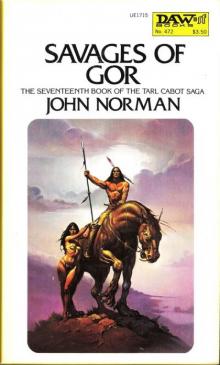 Savages of Gor coc-17
Savages of Gor coc-17 Fighting Slave of Gor
Fighting Slave of Gor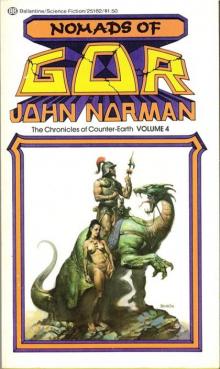 Nomads of Gor coc-4
Nomads of Gor coc-4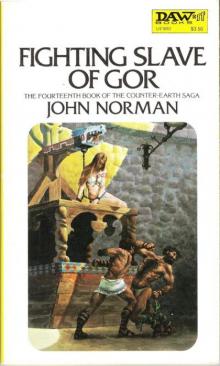 Fighting Slave of Gor coc-14
Fighting Slave of Gor coc-14 Swordsmen of Gor cog[oc-29
Swordsmen of Gor cog[oc-29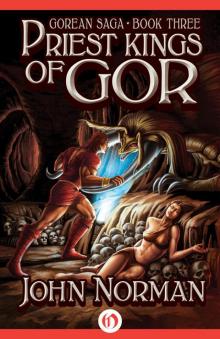 Priest-Kings of Gor
Priest-Kings of Gor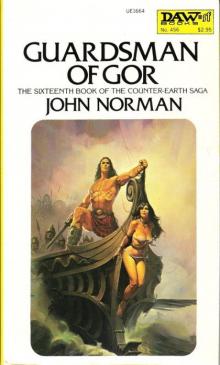 Guardsman of Gor coc-16
Guardsman of Gor coc-16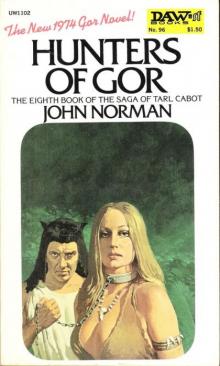 Hunters of Gor coc-8
Hunters of Gor coc-8 Dancer of Gor coc-22
Dancer of Gor coc-22 Prize of Gor coc-27
Prize of Gor coc-27 Conspirators of Gor cog[oc-31
Conspirators of Gor cog[oc-31 Slave Girl of Gor
Slave Girl of Gor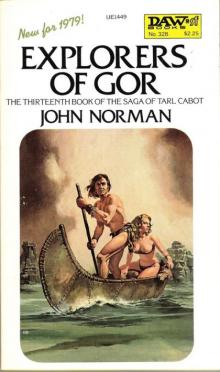 Explorers of Gor coc-13
Explorers of Gor coc-13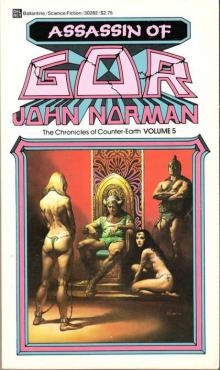 Assassin of Gor coc-5
Assassin of Gor coc-5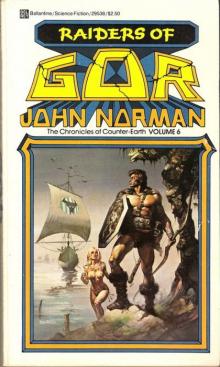 Raiders of Gor coc-6
Raiders of Gor coc-6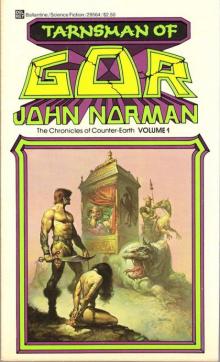 Tarnsman of Gor coc-1
Tarnsman of Gor coc-1 Dancer of Gor
Dancer of Gor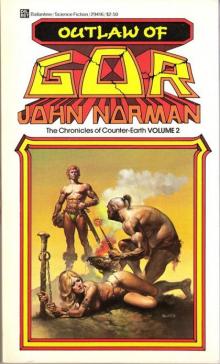 Outlaw of Gor coc-2
Outlaw of Gor coc-2 Guardsman of Gor
Guardsman of Gor Beasts of Gor
Beasts of Gor Ghost Dance
Ghost Dance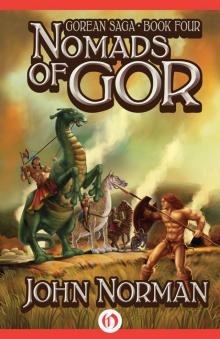 Nomads of Gor
Nomads of Gor Prize of Gor
Prize of Gor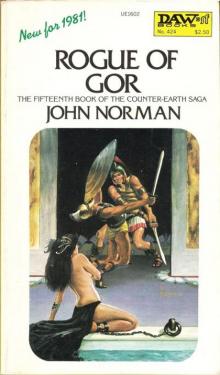 Rogue of Gor coc-15
Rogue of Gor coc-15 Swordsmen of Gor
Swordsmen of Gor